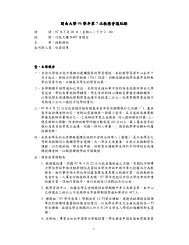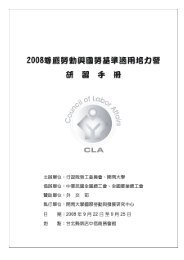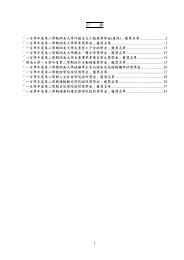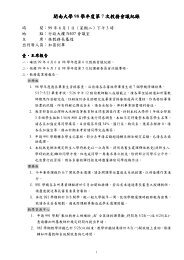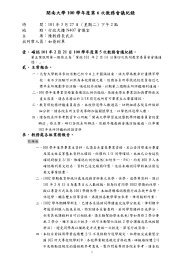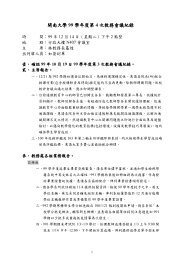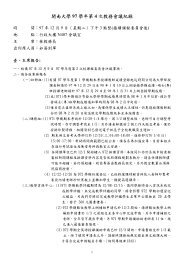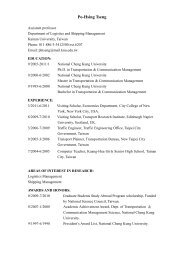活動手冊 - 開南大學
活動手冊 - 開南大學
活動手冊 - 開南大學
Create successful ePaper yourself
Turn your PDF publications into a flip-book with our unique Google optimized e-Paper software.
Mathematical Equations in English:<br />
An Important Element of ESP for Engineering Majors<br />
Carol Troy<br />
English Language Department<br />
DaYeh University<br />
Syou-Rung Tsau<br />
English Language Department<br />
DaYeh University<br />
Abstract<br />
English reading of mathematical equations is a valuable addition to the<br />
undergraduate engineering ESP curriculum. Mathematical equations provide a<br />
convenient framework for presenting much of the terminology encountered in<br />
engineering disciplines for which calculus, linear algebra, and other mathematical<br />
subjects are standard undergraduate course requirements. In foreign language<br />
environments such as Taiwan, students enrolled in such courses encounter English<br />
terminology in various contexts, including written course materials (e.g., English<br />
textbooks and exam papers) and L1 lectures that employ English terms rather than their<br />
L1 equivalents. Reading mathematical equations is a skill in its own right, necessary in<br />
English presentations that involve calculations. Comprehension of mathematical<br />
equation readings is also important, especially for students doing graduate study abroad,<br />
since engineering instructors tend to present mathematical calculations both orally and<br />
(simultaneously) in writing. This means that during note taking, the ability to transcribe<br />
orally presented equations relieves students of the constant need to look up at the<br />
blackboard or projector screen. In sum, reading mathematical equations represents both<br />
a current and (potentially) a future need among Taiwan’s undergraduate engineering<br />
majors.<br />
English reading of mathematical equations is the focus of a course module entitled<br />
Mathematical Equations in English (MEE), which was developed and is now being used<br />
at a private university in Central Taiwan. The goal of MEE is to give ESP English<br />
learners a thorough grasp of the English terminology and structures needed to read the<br />
mathematical expressions, equations, and inequalities encountered in a standard<br />
two-semester calculus course. The MEE materials comprise Powerpoint slides<br />
explaining the target English terminology and structures, dictation exercises to improve<br />
listening comprehension, and online courseware available through MyET, a commercial<br />
pronunciation modeling system. There are six units in MEE, the first five of which deal<br />
-42-



